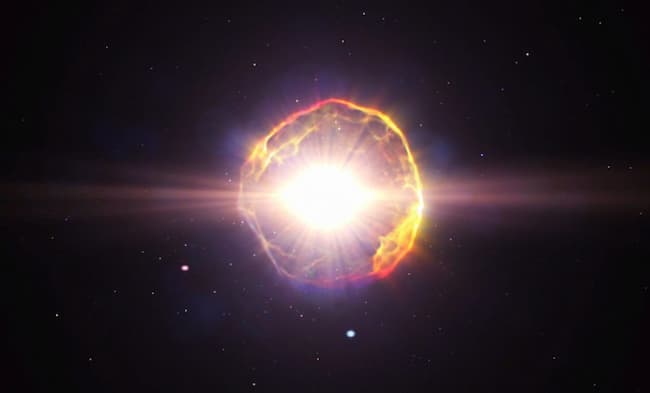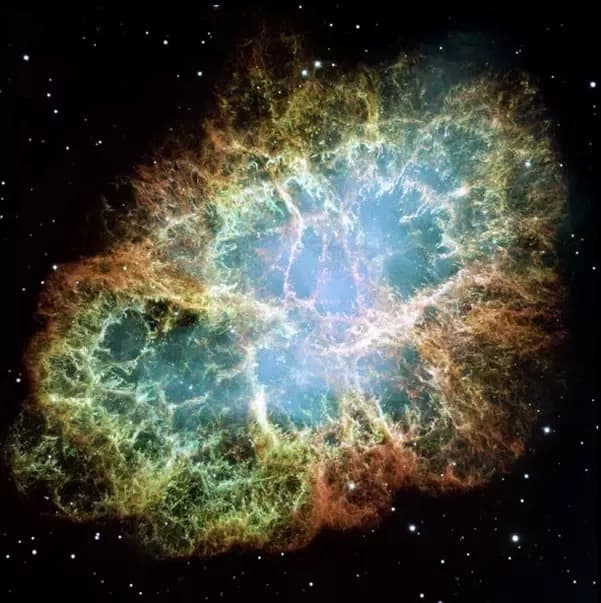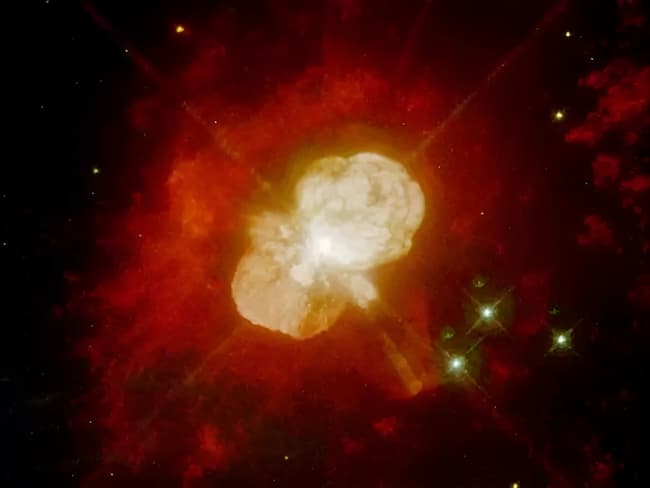In the vast expanse of the universe, extraordinary events unfold, each with its own tale of cosmic wonder. In the year 2020, astronomers were graced with the observation of a mesmerizing phenomenon known as a Red Nova. While powerful,

Red Novas, scientifically referred to as “intermediate luminosity optical transits” (ILOTs), are rare occurrences that have captivated astronomers’ curiosity. These events, characterized by a moderate release of energy, pose a challenge to observation due to their elusive nature. However, amidst their rarity, astronomers speculate that Red Novas may unfold frequently throughout the universe, holding untold secrets of cosmic evolution.

For years, astronomers have pondered the cause of these captivating Red Novas, often postulating the engulfment of planets by their parent stars. Several potential ILOT candidates have been scrutinized, with this intriguing scenario in mind. However, aligning theoretical predictions with observational results has proven to be a formidable task.
Enter ZTF SLRN-2020, a recent observation that may finally provide the missing puzzle piece. Unlike previous suspected star-planet interactions occurring in young systems, where planets engage in chaotic trajectories, colliding with one another or plunging into their parent stars, this particular event involves a main-sequence star—a typical middle-aged star.

Through meticulous theoretical calculations, the astronomer behind the study has concluded that the planet’s proximity to its star involved more than a simple atmospheric slip. The planet underwent a series of violent phases, torn apart as it approached its stellar companion, culminating in the magnificent display of a Red Nova.
As the planet neared its star, intense heating transformed its outer layers into a plasma state. Intricate interplays of electricity and magnetism within this plasma resulted in the ejection of twin jets, launching away from the planet as it orbited its star. However, the gravitational influence of the star prevented these jets from escaping entirely, causing the material to rain back down.

Although the planet reclaimed some of its lost mass through the jets, its fate was sealed by the intense energies near the stellar surface. Prior to its complete engulfment, the planet potentially formed an accretion disk encircling the star itself. Material from the destroyed planet slowly seeped and funneled into the star, culminating in the cataclysmic end. However, the accretion disk, in its own right, possessed enough power to generate jets of its own, expanding and sculpting a nebula away from the system.
The interaction between the ill-fated planet and its star during the course of engulfment unleashed an incredible amount of energy, manifesting as the breathtaking Red Nova phenomenon. While the intricacies of this system and the planet’s unfortunate fate remain shrouded in mystery, astronomers are eager to discover more instances of these lower-energy transient events. Each new revelation brings us closer to unraveling the complex relationships between planets and their parent stars.
In the grand tapestry of the cosmos, the Red Nova phenomenon stands as a testament to the awe-inspiring forces that shape our universe. The devastating encounter between a star and its own planet reveals the captivating dance of destruction and rebirth that unfolds among celestial bodies. As astronomers strive to unlock the secrets hidden within these celestial dramas, the mysteries of star-planet interactions beckon us further into the depths of cosmic wonder. With each new discovery, our understanding of the vast and intricate universe expands, fueling our insatiable quest for knowledge.

